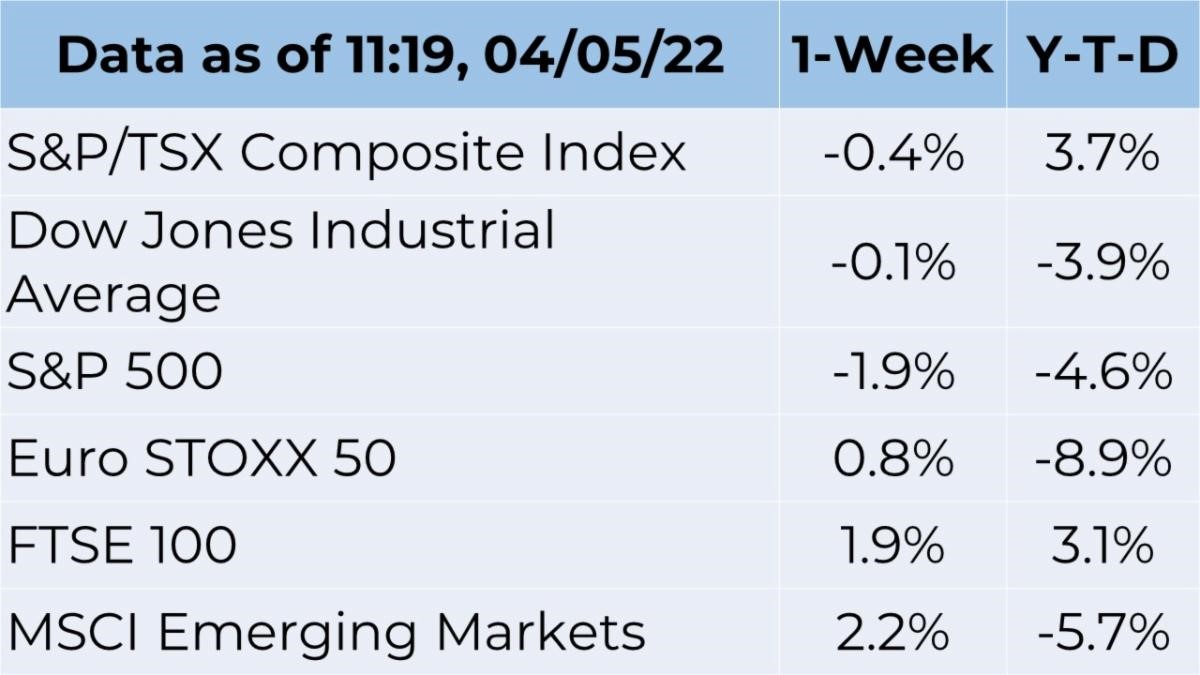Weekly Market Commentary - April 7th, 2022
The Markets
This week, we’re checking in on the Federal Reserve again.
Among other things, The U.S. Federal Reserve uses its tools to promote price stability and maximum employment. Last week, economic data provided insight into both.
Inflation continued to increase
Price stability means ensuring the prices of goods and services increase at a slow and stable pace. Last week, the U.S. Bureau of Economic Analysis reported that consumer prices rose 5.4 percent, year-over-year in February, excluding food and energy, outstripping increases in personal income.
When food and energy were included, overall inflation increased even higher, to 6.4 percent.
As we discussed in the previous issue of the Weekly Market Commentary, the Fed has begun tightening monetary policy with the goal of bringing inflation back in line. So far, it has ended asset purchases and started raising the federal funds target rate. Next, it will begin to shrink its balance sheet.
While official Canadian data tends to lag behind the data coming from south of the border, Canadians have also been experiencing rampant inflation, with gas prices in the Greater Vancouver area rising roughly 18 percent since the beginning of the year, and about 31 percent since this time last year, according to data collected by GasBuddy. This is further compounded by rising food costs, with this year’s Canada’s Food Price Report, compiled by researchers at Dalhousie University, forecasting a 5 to 7 percent increase in food prices over the coming year.
Unemployment remained low
Maximum employment is “…the highest level of employment the economy can sustain without generating unwelcome inflation It describes an economy in which nearly everyone who wants to work has a job”, reported Lorena Hernandez Barcena and David Wessel of Brookings.
Not everyone who wants a job has one, but last week’s employment report from the U.S. Bureau of Labor Statistics showed the unemployment rate was quite low at 3.6 percent, overall. It is worth noting, however, that the participation rate south of the border remains around a percent lower it was before pandemic restrictions started.
The most recent Canadian employment data was from the end of February, where Statistics Canada reported that the unemployment rate, which has been trending downwards, fell to 5.5 percent.
Major stock indices finished the week mixed. The Treasury yield curve inverted last week with the yield for a 10-year Treasury dropping below the yield for a 2-year Treasury. Government of Canada bonds are also moving in the same direction, with the yield for 2-year Government of Canada bonds rapidly closing on the 10-year yield – At the beginning of March, a 10-year Government of Canada bond paid 0.66 percent more than a 2-year bond. As of April 4th, that gap has tightened to only 0.1 percent.
If you have any questions or concerns about your investment portfolios or current market conditions, please don’t hesitate to give us a call.

Source: FactSet
Survery corner:
We are planning on hosting a cycling event this summer after great feedback. Let us know if you're interested.
Cycling Event (May/June 2022)
Let us know your interests, that way we can plan events and campaigns around that. Fill out the survey below.
Special Events
Contest:
We are running a golf contest for The Masters this year. Choose your golfers, winner takes all!

Ride for Heart fundraiser
Thank you for all your support we've already raised 20% of our goal!
Weekly Focus - Think About It
"There is no enjoyment in the game that is easily won. It is that in which you have to strain every muscle and sinew to achieve victory that provides real joy.”
— Eric Liddell, Scottish Olympic sprinter
Best regards,
Eric Muir
B.Comm. (Hons.), CIM®, FCSI
Portfolio Manager
Tracey McDonald
FCSI, DMS, CIM®
Portfolio Manager
Derek Lacroix
BBA, CIM®, CFP®
Associate Financial Advisor


